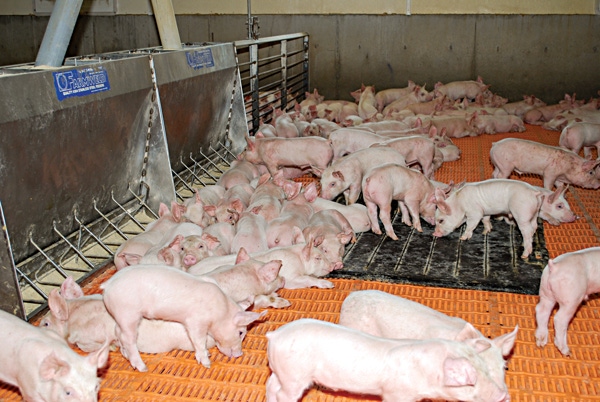February 11, 2016

Federal agriculture authorities eliminated some requirements and repayments for biosecurity actions related to deadly pig diseases and are focusing instead on diagnostic tests.
The USDA’s Animal and Plant Health Inspection Service eliminated requirements that farms with infections from porcine epidemic diarrhea virus or porcine deltacoronavirus show, through a herd management plan, that they were working to clean, disinfect, conduct tests and otherwise work to control the spread of disease. With that change made in January, the agency eliminated repayments for those activities and will use remaining money in an emergency fund for diagnostic testing and reporting.
“Herd management plans were not providing information deemed useful to the program, and remuneration to accredited veterinarians for development of herd plans was not widely utilized,” the revised order states. “These savings will be used to help extend the availability of diagnostic testing and reporting.”
In making the change, APHIS officials modified a federal order issued in June 2014 to delete the management requirements but retain requirements that anyone — including farmers, veterinarians and diagnostic laboratory personnel — who discovers a novel swine enteric coronavirus in a pig herd report the infection to state or federal animal health authorities.
PED outbreaks, which can have death rates approaching 100%, have killed millions of neonatal pigs in the United States. Porcine deltacoronavirus disease outbreaks have caused less severe clinical signs with lower death rates, and USDA information shows it also has been identified in far fewer farms.
Liz Wagstrom, chief veterinarian for the National Pork Producers Council, said USDA-funded diagnostic tests have helped pig owners determine how to control PED and whether to alter operations, including shipping schedules for pigs. Few took advantage of the offer of reimbursement for activities such as disinfecting buildings and washing trucks, which they did anyway.
This year is critical for controlling PED, she says, because sow herds are vulnerable, and the disease has potential to become resurgent. Among herds that had outbreaks as late as early 2014, likely half the sows in each arrived after the outbreaks and are naïve to the disease.
The PED virus also is a bigger risk during cold weather because the virus is more sensitive to heat than cold. Wagstrom said in mid-January that monitoring reports had shown a modest increase in infections, and some farms with infections had endured outbreaks two years earlier. She does note that the infection figures she has seen were far smaller than those in 2014.
The June 2014 APHIS order came with an announcement that $26 million was available to support pork producers and combat these deadly pig diseases, including about $4 million dedicated toward diagnostic testing and virus genomic sequencing. Other dedicated portions of that funding were to support biosecurity practices at infection sites, vaccine development, disease management and control and payments to veterinarians for developing and monitoring herd management plans and sample collection.
APHIS spokeswoman Joelle R. Hayden said the agency projects the remaining money in that fund will last through April.
You May Also Like



